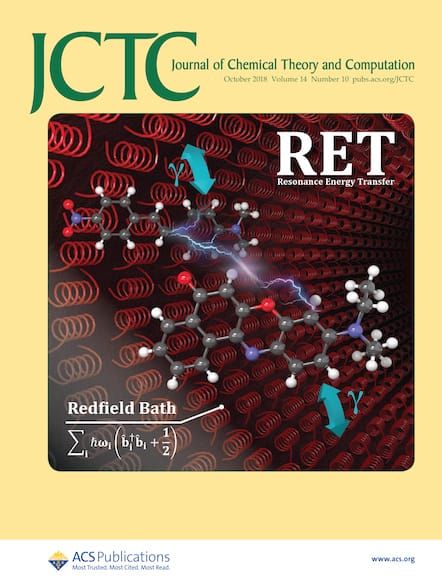序列依赖的内在无序蛋白质的构象景观揭示了不对称链压实。
IF 5.5
1区 化学
Q2 CHEMISTRY, PHYSICAL
引用次数: 0
摘要
内在无序蛋白(IDPs)表现出高度动态和异质的构象集成,受序列特征的强烈影响。虽然链压缩和结垢行为等全局特性已被广泛研究,但它们往往无法解决IDP功能背后的细粒度、序列特异性结构变化。在此,我们对酵母蛋白质组中47个具有代表性的IDP序列进行了长时间的原子模拟,以系统地研究序列组成与构象集合之间的关系。为了分析高维结构数据,我们采用了统一流形近似和投影(UMAP),这是一种保留局部结构关系的非线性降维技术。由此产生的低维嵌入有效地区分了IDP集成,并揭示了一种新的描述符──局部紧致不对称──用于量化链组织的方向性差异。该指标表示为γRg,它捕获的构象特征与传统的全局度量(如旋转半径和端到端距离)正交。研究表明,γRg与电荷和亲水性的序列水平不对称相关,构象动力学优先发生在链的较长区域。在这项工作中产生的模拟数据集也为训练机器学习模型和开发改进的粗粒度力场无序蛋白质提供了宝贵的资源。本文章由计算机程序翻译,如有差异,请以英文原文为准。
Sequence-Dependent Conformational Landscapes of Intrinsically Disordered Proteins Reveal Asymmetric Chain Compaction.
Intrinsically disordered proteins (IDPs) exhibit highly dynamic and heterogeneous conformational ensembles that are strongly influenced by sequence features. While global properties such as chain compaction and scaling behavior have been widely studied, they often fail to resolve the fine-grained, sequence-specific structural variation that underlies IDP function. Here, we perform long-time scale atomistic simulations of 47 representative IDP sequences from the yeast proteome to systematically investigate the relationship between sequence composition and conformational ensemble. To analyze the high-dimensional structural data, we apply uniform manifold approximation and projection (UMAP), a nonlinear dimensionality reduction technique that preserves local structural relationships. The resulting low-dimensional embeddings effectively differentiate IDP ensembles and reveal a novel descriptor─local compactness asymmetry─that quantifies directional differences in chain organization. This metric, denoted γRg, captures conformational features orthogonal to traditional global measures such as radius of gyration and end-to-end distance. We show that γRg correlates with sequence-level asymmetries in charge and hydropathy, and that conformational dynamics preferentially occur in the more extended region of the chain. The simulation data set generated in this work also provides a valuable resource for training machine learning models and developing improved coarse-grained force fields for disordered proteins.
求助全文
通过发布文献求助,成功后即可免费获取论文全文。
去求助
来源期刊

Journal of Chemical Theory and Computation
化学-物理:原子、分子和化学物理
CiteScore
9.90
自引率
16.40%
发文量
568
审稿时长
1 months
期刊介绍:
The Journal of Chemical Theory and Computation invites new and original contributions with the understanding that, if accepted, they will not be published elsewhere. Papers reporting new theories, methodology, and/or important applications in quantum electronic structure, molecular dynamics, and statistical mechanics are appropriate for submission to this Journal. Specific topics include advances in or applications of ab initio quantum mechanics, density functional theory, design and properties of new materials, surface science, Monte Carlo simulations, solvation models, QM/MM calculations, biomolecular structure prediction, and molecular dynamics in the broadest sense including gas-phase dynamics, ab initio dynamics, biomolecular dynamics, and protein folding. The Journal does not consider papers that are straightforward applications of known methods including DFT and molecular dynamics. The Journal favors submissions that include advances in theory or methodology with applications to compelling problems.
 求助内容:
求助内容: 应助结果提醒方式:
应助结果提醒方式:


